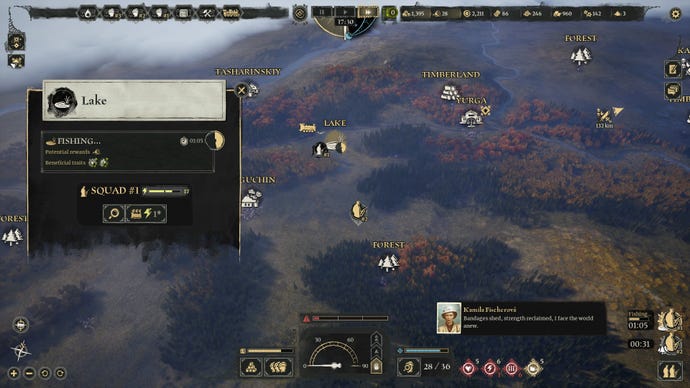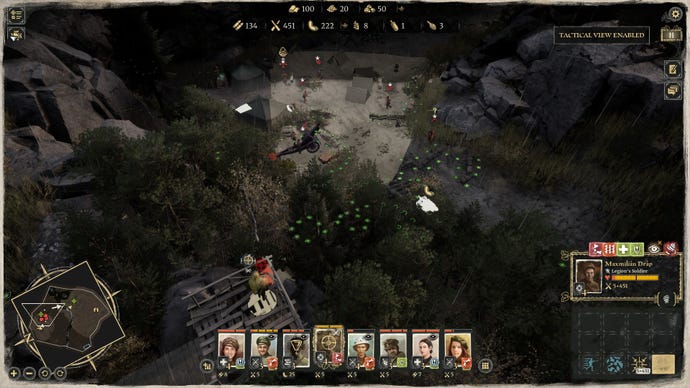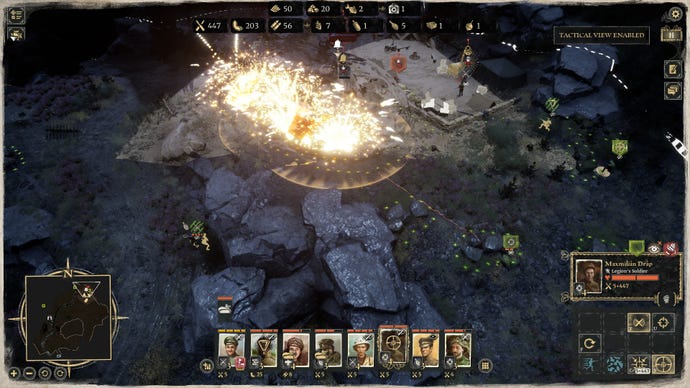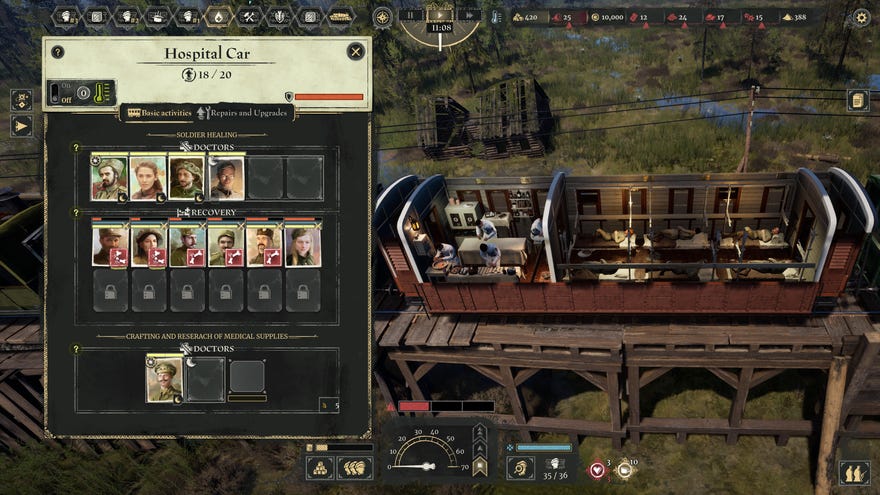Last Train Home review: freezing to death in the Russian Civil War shouldn't be this entertaining
If you could only Syrový
Fewer games than I'd like have captured that feeling of everything getting really out of hand. Not just getting harder, but putting you in a situation that's truly deteriorating all around you.
Last Train Home has an intriguing premise: taking the Czechoslovak Legion home from the Eastern front via an armoured train directly through the chaos of the Russian Civil War. Its unusual mixture of survival sim, RPG, tactical skirmishes, and narrative history holds together, I think, precisely because your efforts to make it all work provide such a contrast to what an incredible mess the world around you is becoming.

It's also novel in that your goal isn't to win the war. It's to get the hell out of there. A deal was cut to evacuate you via Vladivostok, beginning a chaotic 5000 mile odyssey away from home in order to get back home. On paper you're neutral, your fledgling government even issuing orders, but you fought for the Tsar and the Allies are huffing their first hit of red scare, and neither the Reds nor relatively friendly Whites can ignore an unaligned army in their midst.
So you'll inevitably fight the Reds in particular (insistently Reds, not communists - some of your own troops will likely be communist, but, y'know, it's complicated) but potentially the Whites too, and various third party troublemakers. You'll do good turns for the locals, pick up other stragglers to swell your ranks and get more countrymen home, and buy, gather, and steal food and coal and materials to winter-proof, arm, and generally upgrade your train and keep everyone from freezing or starving.
It's a lot. Of course it's very gamified, but turning metal into armour plating for carriages, or cloth into beds and winter uniforms works as a representative abstraction. None of it feels outlandish, even when you're capturing the imperial gold reserve with a whopping ten soldiers, or having your guys research better scopes. It's a little hard to explain, but its systems have been carefully arranged to serve a thematic purpose, not just shoved in because you gotta have crafting, right?




Your soldiers are the heart of it, and they too have an RPG levelling thing going on, but again not a perfunctory one. Each of your few dozen men and women is unique, with a little biography, character traits, and a few stats. The right stats let you train them in a role, which I hesitate to call "classes" because they're actual roles within a team. A legionary can be a rifleman, a medic, and a cook, but which he'll be doing at any given moment depends on what role you've assigned him when setting up a squad or directing him to a job on the train. Each role is either combat or non-combat, but everyone can take on more roles as they gain overall experience, and experience in specific jobs grants bonus stats and special skills, some of which transfer across roles. It can be worth giving someone the medic role even if you only ever deploy them as a scout, for example, since that gives them the 'heal' skill, and a good labourer will get strong enough to be a spare rifleman before long.
Power levelling your way to a dream team doesn't work, as everyone needs rest and healing. A variety of character traits can effect story events and non-combat mission outcomes, the latter also providing low-risk experience so you can cross train your good doctor as a grenadier by having her tag along on those instead of taking up a precious slot on a fight. It all means you'll think carefully about who to send on every job, balancing their personality, skills, and above all their potential. You really need everyone to be their best self, and it's this that really elevates the whole design. It's one of the best military management games I've ever played because it really gets you thinking about how best to use all your people, not just where to stack your chips.
Thankfully, there's also minimal dicking around with inventory and only four skills can be equipped at a time, so they don't get too overwhelming in combat. Skills do vary wildly in usefulness, though. Suppressing with a machine gun works in theory but eats an entire magazine, which I found far too expensive compared to the rifleman's free bayonet charges, and scouts are in the odd position of having the most useless skill - throwing rocks that are apparently made of osmium, a distracting trick that can be replicated by anyone simply poking their head out for a moment - and four incredibly powerful, cheap ones.
Combat is probably where it's weakest, thanks to amnesiac enemy AI and an annoyingly conjoined "move slowly and hold fire and use melee" command. It means that scout will get into concealment in time but then shoot at a passing tank, getting everyone killed, or that medic will either aim at a guy a metre away or slowly creep towards him instead of charging. As your train moves Eastward, some of the hotspots you'll send parties out to investigate will be real-time scripted missions that lie somewhere between Men of War: Assault Squad and a more stealth and flanking mini-encounter game like Mutant Year Zero.

The intricacies of fights aren't outright weak, but it's where most of my minor complaints came up, like bayonet charges targeting an area not a person, so if you send three in at once they'll probably all target the same guy and then stand there while two survivors shoot them. Sniping can't one shot an exposed machine gun but can two-shot an armoured car. Things that look like cover often aren’t, soldiers ignore grenades and you don't get much notification when they're attacked. But the weakest part of a bloody strong game is still an enjoyable one, and thanks to some great sound effects, the slow rate of fire, and high effectiveness of cover, it all makes for damn tense shootouts where every shot feels significant.
Last Train Home's other great strength is that all its parts lead so naturally into each other that its considerable length goes by in hour long waltzes from assaulting a town, to upgrading your engine while the fishing expedition walks back, to driving to the next station, to buying some ammunition, to scavenging for fuel, to reaching the next chapter in a fictionalised history of remarkable events that seems now like the most obvious fit for a game ever. To make all this so fun and compelling without feeling tacky or overly sanitised is a remarkable achievement, and one I'm glad to recommend.
This review was based on a retail build of the game provided by the publisher.

